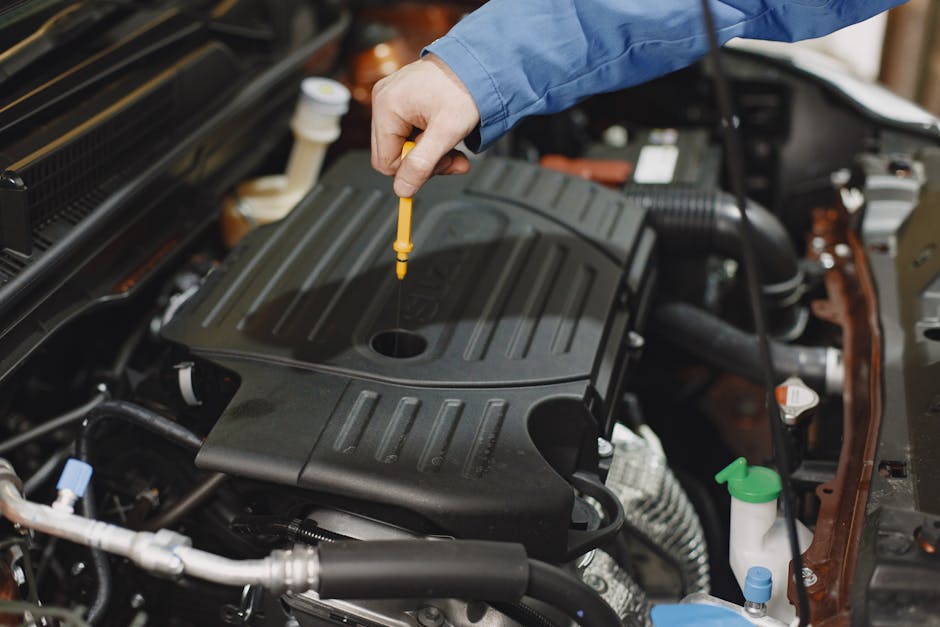How to Check Your Oil Levels: A Simple Guide
Did you know that checking your oil levels can save your engine from serious damage? Regularly checking your oil is one of the easiest ways to maintain your vehicle. In this guide, well walk you through how to check your oil levels like a pro. Lets dive in!
Why Is Checking Oil Levels Important?

Oil keeps your engine running smoothly. It lubricates moving parts, reduces friction, and helps cool the engine. Over time, oil breaks down and becomes less effective. This can lead to engine wear, overheating, and even breakdowns.
According to auto experts, about 75% of cars on the road are low on oil. that’s a staggering number! Keeping an eye on your oil levels can prevent costly repairs and extend the life of your car.
When Should You Check Your Oil Levels?

Generally, you should check your oil levels every month. However, it’s a good idea to check it more often if you:
- Have an older car
- Notice any oil leaks
- Do a lot of stop-and-go driving
- Drive in extreme weather conditions
Additionally, always check your oil before a long trip. it’s a small step that can help ensure your journey is smooth and trouble-free.
How Do You Check Your Oil Levels?

Checking your oil isn’t complicated. Follow these simple steps to get started:
1. Gather Your Tools
You don’t need much to check your oil:
- A clean rag or paper towel
- Your vehicles owner manual (optional)
Ready? Lets move on!
2. Find the Right Spot
Park your car on a flat surface. This helps you get an accurate reading. Turn off the engine and let it sit for a few minutes. This allows the oil to settle.
3. Locate the Dipstick
The dipstick is usually a long metal rod with a colored handle. You can find it near the engine. Check your owners manual if you can’t locate it. don’t worry; youll spot it!
4. Pull Out the Dipstick
Carefully pull the dipstick out. Wipe it clean with your rag or paper towel. This removes any oil that may give you a false reading.
5. Check the Oil Level
Reinsert the dipstick fully and then pull it out again. Look at the end of the dipstick. You should see markings indicating the oil level.
Heres how to read it:
- If the oil is at the full mark, you’re good to go!
- If it’s between the full and low marks, add a little oil.
- If it’s at or below the low mark, add oil ASAP.
6. Add Oil If Necessary
If your oil is low, don’t panic! Just follow these easy steps:
- Locate the oil filler cap. This is usually marked with an oil can icon.
- Remove the cap and use a funnel to pour in the oil.
- Add a little at a time, checking the dipstick after each pour.
Be sure to use the correct type of oil. Your owners manual tells you what to use. Using the right oil protects your engine.
How Often Should You Change Your Oil?

Changing your oil is just as important as checking it. Most experts recommend changing your oil every 3,000 to 7,500 miles. It depends on your car and the type of oil used. Check your owners manual for specifics.
Also, remember to check your oil filter. A clean oil filter helps keep your oil fresh. If you notice dark or gritty oil, it’s time for a change.
Common Questions About Oil Levels
What Happens If I don’t Check My Oil?
If you ignore your oil levels, you risk serious engine damage. Low oil can lead to overheating, which can hurt vital engine components. In short, it can be costly!
Can I Check My Oil When the Engine is Hot?
it’s best to check oil when your engine is warm but not hot. A warm engine gives a more accurate reading. However, make sure to let it sit for a few minutes before checking.
What Type of Oil Should I Use?
Always refer to your owners manual. It will specify the right oil type for your vehicle. Common options include:
- Synthetic oil
- Conventional oil
- High-mileage oil
Using the right oil helps your engine run smoothly!
Expert Tips for Maintaining Oil Levels
Here are some tips from auto experts to keep your oil in top shape:
- Keep an eye on the oil color. Healthy oil is amber or light brown. Dark oil may need changing.
- Watch for leaks. If you see oil spots where you park, you may have a leak.
- don’t skip oil changes, even if you’re low on mileage. Regular changes keep your engine running smoothly.
Wrapping Up: Your Action Steps
Checking your oil levels is a quick and easy way to protect your engine. Make it a habit, and youll save yourself time and money in the long run.
Heres a quick recap of what to do:
- Check oil levels monthly.
- Follow the steps to check the dipstick.
- Add oil if needed, using the right type.
- Change your oil regularly.
By staying on top of your oil levels, you’re ensuring a longer life for your vehicle. For more tips on car maintenance, check out our post on Maintaining Your Car for Longevity.
Now that you know how to check your oil levels, go ahead and give it a try! Your engine will thank you.



